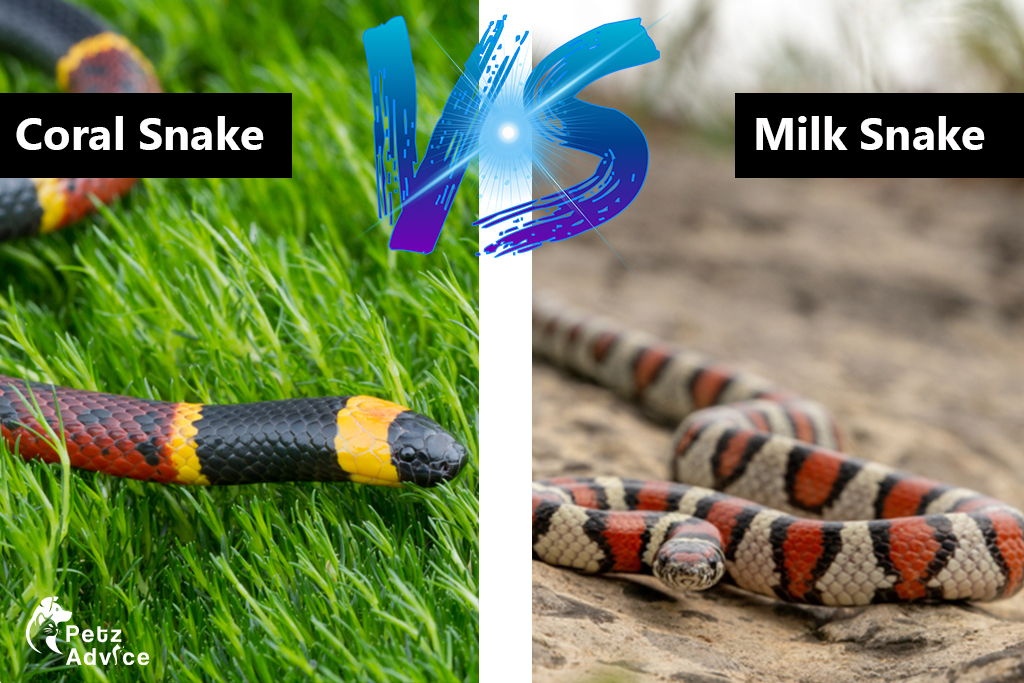Introduction
Have you ever seen with a vibrant snake? You must have wondered if it is a harmless milk snake or a deadly coral snake. These two species of reptile family share a remarkable resemblance that often creates a confusion and fear. Don’t worry! We have solving this puzzle. Let’s explore the key differences that can help you spot the difference between these two serpents.
Color Bands:
The most traditional way to differentiate between a coral snake and milk snake is by observing their coloring style. Both snakes have different colors of red, yellow and black bands. Remember the golden rule! Have heard a rhyme that says, “Red touch yellow, kill a fellow; red touch black, friend of Jack”? Be mindful, Coral snake will always have red color bands touching the yellow bands. On the other hand, milk snakes have red bands touching the black bands. What an amazing hack!
Snout Shape:
Another difference is the shape of their snouts. The deadly coral snakes will have a rounded snout, while the milk snakes are likely to have a more pointed snout.
Body Shape:
Milk snakes have typically a thicker body as compared to a coral snake. But this feature can’t be a reliable factor always.
Behavior:
The deadly coral snakes are more secretive in their behavior and tend to hide themselves in burrows or leaf litter. Milk snakes, on the other hand are more active and you can find them in a variety of habitats.
Their Geographical Location:
Gaining knowledge about the geographical range of both these serpents can be helpful in many situations. Coral snakes are more frequently found in specific regions, while milk snakes are commonly found in diverse locations.
Quick Tips!
These general characteristics can help you spot the difference between the two, but they are not always foolproof. Few milk snakes species may have color variations that may mimic coral snakes, but if you encounter a snake that closely resembles like a coral snake, it is important to prioritize your safety. Keep a safe distance and avoid to handle the snake until you can easily identify it.
Misidentification could have dire consequences. Coral snake venom is very strong and even one bite can be life-threating. So, play safe. If you are unsure about its real identity, keep a safe distance and seek professional help.
Wrapping Up!
With a little knowledge, you can easily identify the difference between a coral snake and a milk snake. By understanding about few differences in their color patterns, behaviors, body shape, snout shape and their geographical locations, you can appreciate these fascinating members of reptile family from a safe distance. So, next time when you spot a vibrant snake, take moment and observe it carefully and determine whether it is a deadly coral snake or a harmless milk snake. Just stay safe, be curious and respect these incredible reptiles!


